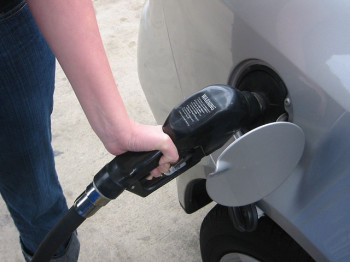
My wife and I put a lot of miles on our cars, especially during the vacation season. Despite the high prices for fuel, it is much more economical for us to take a trip in the car than it is to fly somewhere. Also, we see so much more of the countryside while driving than we can if we fly from place to place.
Given the trending of gas prices toward ever-higher dollar amounts, many people are using more and more of their vacation budget on gas. While no one seems to be able to make gas cheap again, and I’m certain that the trend will continue to rise, there are still some things you can do to help save on gas this vacation season. Here are some gas-saving tips you should use to help reduce your fuel budget as much as possible.
Slow Up, Speed Down
When you are on the road, slow down a little when you are going up hills and pick back up to the speed limit when going downhill. This is said to save fuel because your car has to work much harder going uphill (especially if you are using air conditioning and have luggage and multiple passengers), whereas gravity is your friend going downhill.
Many times, I’ll even pop the car’s transmission into neutral and let it roll down a long downhill section to let the engine fall to an idle speed, but only follow that suggestion if you can make the gear change safely, and if it makes sense. I’ve seen people accidentally jerk the steering wheel while trying to change gears. Also, if the hill is too long and steep, you may overheat your brakes keeping your car slowed to the speed limit.
I am in no way advocating that you should ever drive over the speed limit. In fact, speaking of speed, observing the speed limit and not speeding also saves gas. It’s safer, too.
Know When to Turn Off the AC
While traveling in the heat without air conditioning can be downright dangerous, there are times when you can turn it off to save fuel. For example, turning off the AC when driving uphill can reduce the power pull on your engine by quite a bit, sources say. Of course, you can leave the fans going and the residual cooling effect lasts for a few minutes. When you’re on the level or going downhill, turn the AC back on.
Tire Care
If your tires are worn, get them rotated before your trip or, if they are very worn, get them replaced.
Proper air pressure is very important. Make sure your tires are aired up to the manufacturer’s specifications Look at the inside of the driver’s side door if you are unsure as to your tires’ PSI (pounds per square inch). It should be labeled there. Adding too much or too little air can both be a problem, so if you are in doubt, have your mechanic do it.
Vehicle Check-up
Before your vacation, get your car thoroughly looked over. Make sure everything is running as efficiently as possible. Efficiency in your engine means greater efficiency on fuel usage. Check the oil level or have it changed if it is time. Get a “tune up” if needed, and have all the fluids checked. This is a great time to have any necessary work done on the tires.
Travel Light
As mentioned above, a lot of excess cargo can really draw on the engine’s power. It’s said that every 100 pounds added to your car’s weight will decrease the gas mileage by 1 percent.
Try to be careful to use lightweight baggage carriers (such as duffel bags rather than heavy suitcases), and only pack the minimum necessities for your trip.
How You Drive
Have you ever ridden in a car with someone who has a difficult time regulating the accellerator? They speed up, slow down, speed up, slow down, even while cruising a long flat straightaway. OMG! Use your cruise control, or something.
Don’t be that guy. When you hit the accelerator pedal, that’s when your car is using the most gas. So try to cruise at a smooth speed.
Also, avoid the speed up, brake fast pattern that so many drivers fall into. Get up to cruising speed smoothly, cruise at a steady speed, and when you need to stop, coast down to the stop as much as possible without braking hard. Keep the ride as smooth as possible to save on fuel.
